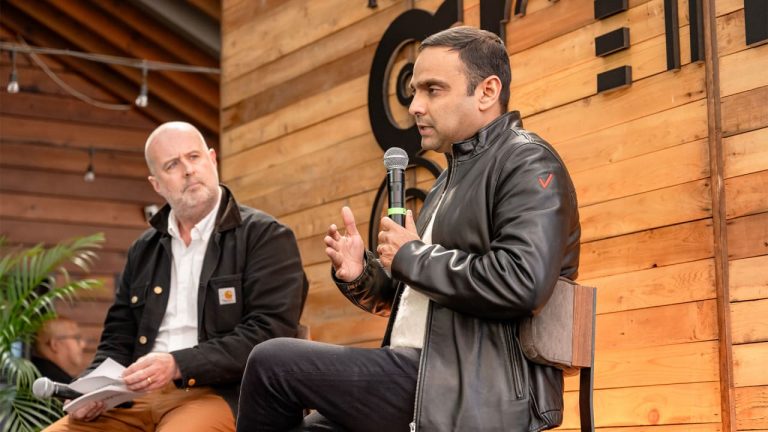

We’re about to embark on a new era of how we interact with technology, along with the types of devices we’re using on a daily basis. And the combination of the metaverse and artificial intelligence will be key to unlocking that big cultural shift, according to Sowmyanarayan Sampath, CEO of Verizon Consumer.
Any skeptics about the change that’s underfoot need look no further than how technology use has shifted in recent years. Mobile network traffic surged 129% in the past five years and in the second half of 2023, 47% of consumer mobile traffic was devoted to video, according to a report released this week by Verizon. And Americans seemingly can’t get enough TikTok, with users spending an average of approximately 1 hour and 42 minutes each day on the app.
Clearly, people are already hyper-connected—nearly 30% of Verizon’s customers spend six-plus hours each day on their phones—but the next decade of network growth could be driven largely by the metaverse and AI, Sampath said Sunday during a discussion hosted by Fast Company at SXSW in Austin. “We are excited—it could be the growth of the next tsunami of data that’s happening.”
The devices we use are also ripe for an upheaval. In the nearly 17 years since Apple released its first iPhone, the basic form factor of smartphones hasn’t changed much, even if the functionality has improved markedly, Sampath said. The next generation of devices, like Apple’s Vision Pro headset, has a “very difficult” user interface currently because you can’t type, he added. “But with very good-quality voice recognition and AI, that problem goes away.”
There could also be “a quantum leap” in the number of online-connected devices in an average household in the next few years—from an average of 10 currently to as much as 50 or 60, Sampath predicted.
If all of this prospective change makes you want to embrace your inner luddite, even Sampath acknowledges there are limits to hyper-connectivity. While Verizon’s job as a network provider is to provide a connection whenever people need it, he said he imposes “very strict” rules about when his two children can use their devices, including during meals and at bed time.
“It’s not in our interest for people to use the internet all the time,” Sampath said. “We want people to have a balance, have relationships in real-time, have a meal, go for a walk, take your dog for a walk, go grocery shopping. It’s very therapeutic.”
Source:Anna-Louise Jackson , www.fastcompany.com, [publish_date
Source Link